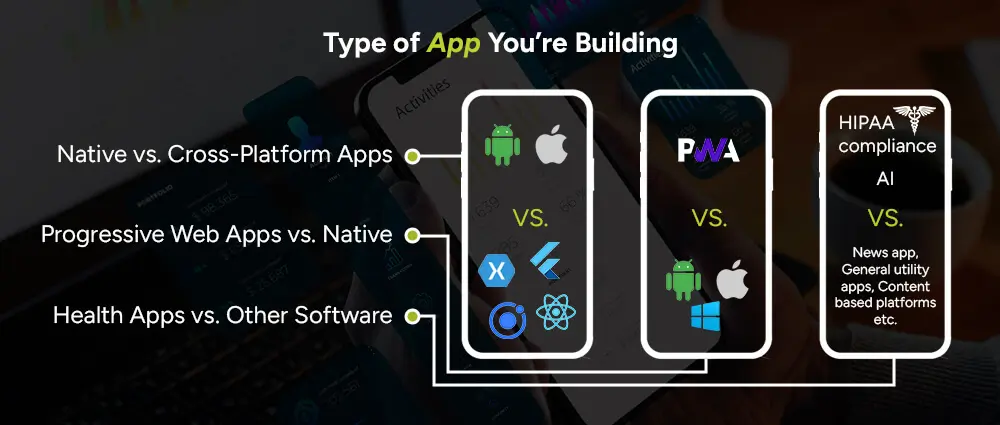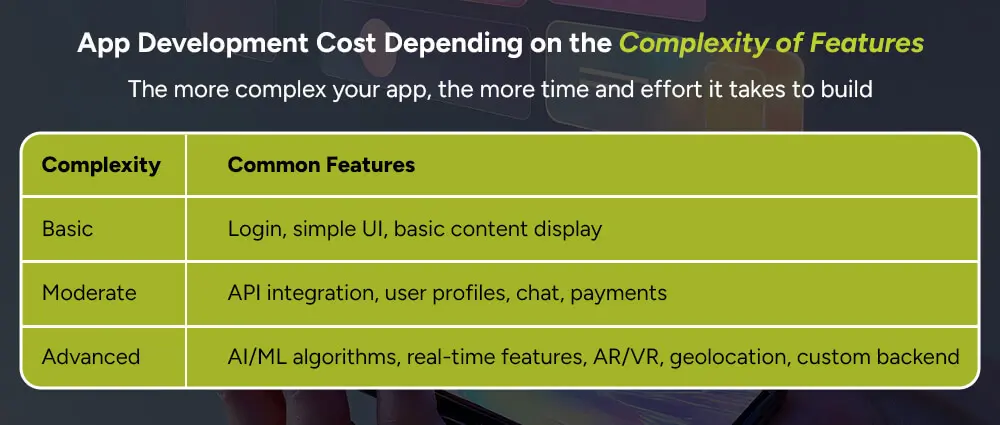Thinking about launching your own app in 2025? Whether it’s the next health-tracking revolution or an e-commerce game-changer, one question is bound to come up early: How much does it cost to build an app in 2025?”
The honest answer? It depends.
App development cost varies significantly based on multiple factors, ranging from the type of app you want to build, to its complexity, features, the development platform, and even the country your development team is based in.
Let’s break it all down so you get a clearer picture, without diving into confusing price tags or hard numbers.
Before we talk about actual budgets, it’s important to understand what affects app development costs. Imagine building an app like building a house, you wouldn’t expect the cost to be the same for a cozy cottage and a luxury villa, right?

Native applications are typically designed for one specific platform, whereas cross-platform applications are supported on both the platforms mentioned above. Generally, native applications will provide better performance and experience, but they take more time to develop.
In short, a cross-platform application shares a single code base for both platforms. They take a shorter time to develop and lower costs, but perhaps sacrificing a little bit more on the performance or user customization.
Progressive Web Applications are mobile-optimized websites, which are cheaper to build and maintain. They are quite interesting for businesses looking to have a presence without actually going through all the processes of developing a fully mobile application. Native applications will be better suited for full-feature experiences such as ride-hailing, gaming, or health tracking.
Health apps usually need real-time data, wearables integration, strong security like HIPAA compliance, and sometimes even AI.
That makes them more complex, and more expensive, than, say, a to-do list or a news app. These add to the app development cost compared to simpler utility apps or content-based platforms.
Different industries have different app requirements. For example:
Each of these business types affects how much it costs to build your app, depending on the features and security level required.
The more complex your app, the more time and effort it takes to build.

Even features that seem simple, like push notifications or login with Google/Facebook, can add time and cost.
The entire development procedure is subdivided into various stages. Each of them has its associated cost:
Additionally, the costs that are also associated with development must follow every stage: Strategy & Planning-in defining goals, audience, and features; UI/UX Design-in defining looks, feels, and experience; Development coding on front and back ends; Testing & QA-in catching bugs and ensuring all devices work with the app, and Deployment-publishing on the app stores.
Post-launch support: updates, patches, and new features. Of course, don’t forget software licensing, third-party services-for example, Google Maps and payment gateways, as well as cloud infrastructure, all of which impact final app development cost.
While budgeting, it’s easy to focus only on design and coding. But watch out for these hidden costs:
These elements are essential if you want your app to perform well and reach your target audience.
Once your app is live, the work isn’t over. Apps need regular updates to stay compatible with new OS versions, fix bugs, and introduce new features. These app maintenance costs are ongoing but crucial.
You might also need ongoing customer support, especially if your app offers real-time services or e-commerce functionality.
There is no need to put everything on the line for the first go. Here’s how to be sensible:
Take note of the MVP (Minimum Viable Product): Create only the important features to test your idea with feedback from users.
There are also some app development cost calculators online to give rough estimates based on requirements, but take these as guide figures, not as fixed quotations.
As mentioned, different industries and platforms come with different cost expectations:
Also, industry-specific needs like data security in finance or real-time tracking in logistics play a huge role in pricing.
The location of your development team significantly affects your overall cost.
We take application development very seriously at Arpatech. Scalable, secured, and high-performance applications that suit your specific needs are what we implement here. Put your best foot forward with our clear and flexible processes. We also offer the option to either build an MVP or create a full-featured application from day one. Our applications are feasibly strategically planned, expertly developed, and continuously supported to turn into prodigious success above cost.
According to Gartner-backed surveys from global development firms, businesses are increasingly moving toward hybrid models and MVP-first approaches in 2025 to manage app development costs better. The focus is now more on long-term sustainability than one-time launches.
When it comes to figuring out how much it costs to develop an app in 2025, clarity and planning are key. Costs will vary, but with the right team, approach, and strategy, your app can be both affordable and powerful.
If you’re ready to explore possibilities, get in touch with Arpatech today. We’ll help you bring your idea to life, one smart step at a time.
When it comes to development, the size of the app, its feature set, and the team working on it all come into play. A small app would, therefore, be affordable, while an app with an extensive set of integrations and an elaborate feature set may incur considerable costs. We suggest that you start with something small and scale it up.
It’s not an easy question to answer. Freelancers may be less expensive in the short-term, but professional app development agencies have the experience in planning, security, and long-term support. When weighing your options, think quality and trust, not just price.
Definitely, if you have clarity on the purpose, know your target audience well, and propose a solid value proposition. Whether for branding, customer connection, or launching a new business, a well-built app in 2025 can be a game-changer.